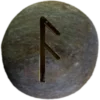Last Updated on October 19, 2024

Dróttkvætt, a common form in skaldic poetry, played a vital role in Norse literature. The term “dróttkvætt” means “courtly verse,” reflecting its association with royal courts. This meter stood out for its strict structure and use of kennings, intricate metaphors characteristic of skaldic poetry. Poems using dróttkvætt often celebrated kings, warriors, or gods, showcasing both the poet’s skill and the subject’s glory. Unlike the freer Eddic poetry, this form adheres to tight rules, demanding the poet’s precision and mastery of language.
The Prose Edda, written by Snorri Sturluson, offers insight into the technical aspects of this poetic form. Snorri’s work emphasizes its complexity and importance. He explains the poetic rules and highlights skalds like Egil Skallagrímsson, a master of dróttkvætt, who composed praise poems for kings like Eirik Bloodaxe. One of Egill’s famous works, Höfuðlausn (Head-Ransom), exemplifies the form’s rich and layered style. It saved him from execution, showcasing poetry’s power in Norse culture.
Structure of Dróttkvætt
Dróttkvætt follows a strict structure with eight lines per stanza. Each line consists of six syllables, making the meter tightly controlled. Poets must create internal rhyme, known as “hendingar,” in alternating lines. These internal rhymes might either match exactly (full rhyme) or share similar sounds (half-rhyme). The first and second halves of each line mirror each other, further increasing the difficulty.
Kennings play a major role in dróttkvætt, enriching the text with metaphor. A kenning combines simple words into more complex meanings, often referencing gods or mythic events. In Hákonarmál, composed by Eyvindr skáldaspillir, kennings and dróttkvætt celebrate King Hákon’s heroic death. These techniques show the Norse love of layered, allusive storytelling, where meaning unfolds gradually. The skald’s talent lay in skillfully blending intricate patterns with captivating imagery, all within the constraints of this meter.


